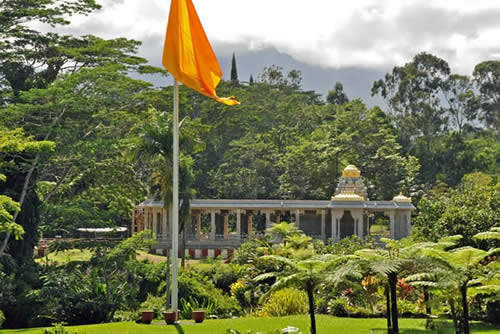Ilankai Tamil Sangam30th Year on the Web Association of Tamils of Sri Lanka in the USA |
|||
 Home Home Archives Archives |
Hawaii Temple Joins Thai Poosam Celebrationby Tamil Guardian, London, January 24, 2011
Read latest issue of Hinduism Today The Kadavul Temple in Hawaii was amongst the thousands of Saivite temples celebrating the festival of Thai Poosam this month. The Kadavul temple is attached to the Kauai Aadheenam or monastery, which traces its guru lineage directly from Jaffna’s well known sage Yogaswami. Kauai is the oldest of Hawaii’s main islands. The Kauai Aadheenam was established in 1973, by Sivaya Subramuniyaswami, an American priest initiated by Yogaswami in Jaffna in 1949. In 1986, the World Religious Parliament in New Delhi honored Sivaya Subramuniyaswami as one of the five Hindu spiritual leaders outside India who had most dynamically promoted Hinduism in the previous 25 years. He passed away in 2001. Thaipoosam Thai Poosam is the celebration of an ancient Saivite myth in which Murugan slays the demon (or Asura) Tharakasuran, to stop him from further wreaking havoc on the three worlds. Murugan, the Tamil warrior god is also considered the patron god of the Tamil language and people.
The Thai Poosam festival usually falls towards the end of January or early February when the star cluster called Pusam, after which the festival is named, rises with the full moon. It is celebrated with Abhishekams (sacred bathing) to Lord Murugan in Saivite temples across the world and Murugan pilgrimage centres in Tamil Nadu. The festival is also associated with the practice of Kavadi – public penance where devotees pierce their bodies with small spear replicas of Murugan’s Vel (Spear) and walk barefoot carrying offerings on their heads or balanced off the spears, or perform other hard penance such as walking on hot coals. It is not unusual for up to 10 000 Kavadis to arrive at the Murugan Kovil in the South Indian Palani Hills for Thai Pusam, while the Batu cave temple in Malaysia often attracts over a million devotees. Aadheenam The ceremony last week at the Aadheenam was performed by the resident temple priests who have been trained in Jaffna and Southern Indian temples, and attended by the monastics headed by their present Satguru, Californian-born Bodhinatha Veylanswami. The festival was attended by the small but intensely devotional Saivite community in Hawaii, as well as some Tamil expatriates from the Diaspora.
The Kadavul temple uses the Panchaamritham recipe of South India’s Chidambaram Temple -fresh banana, ghee, milk, honey, and jaggery. The successive offerings are each intended to invoke different blessings on those present and on the whole community – wealth, longevity, progeny and so on.
|
||
|
|||

 The guru lineage is named Kailasa Parampara, after the Kailasa mountain range in the Himalayas where the earliest of these yogis is said to have meditated.
The guru lineage is named Kailasa Parampara, after the Kailasa mountain range in the Himalayas where the earliest of these yogis is said to have meditated. Thai Poosam follows closely after the harvest festival in January of Thai Pongal - literally ‘the January overflowing’ (of food and abundance)
Thai Poosam follows closely after the harvest festival in January of Thai Pongal - literally ‘the January overflowing’ (of food and abundance) The ceremony follows the classical format of a series of Abhishekams where the deity is bathed successively in milk, water, sandalwood-infused water, rosewater and Panchaamritham blend-infused water.
The ceremony follows the classical format of a series of Abhishekams where the deity is bathed successively in milk, water, sandalwood-infused water, rosewater and Panchaamritham blend-infused water.

